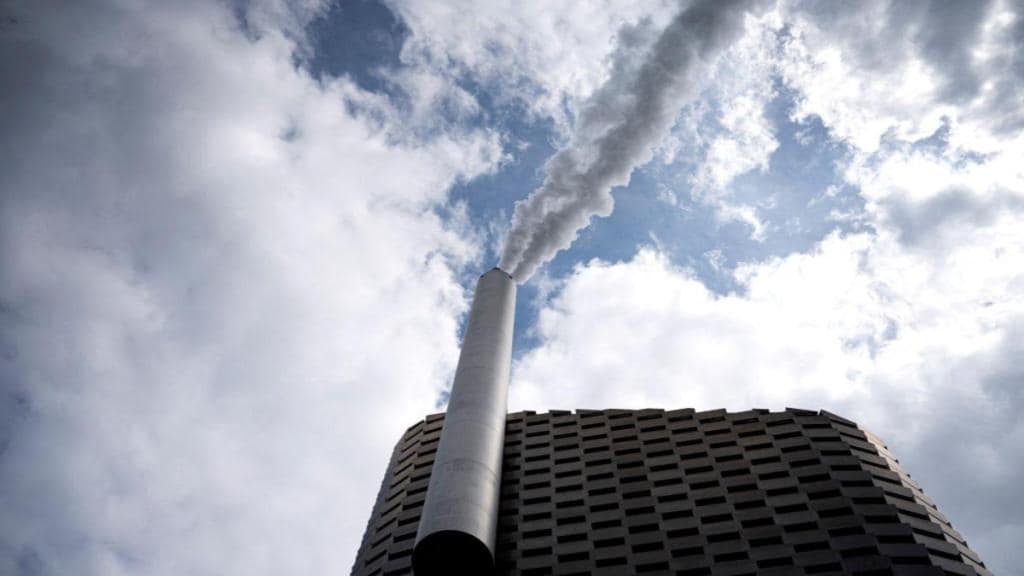– By Arun Shukla
The Indian cement industry, which is the second largest in the world in terms of manufacturing, has significantly improved its methods and processes in the last few years as a result of its increased emphasis on environmental protection. It has ensured the integration of sustainable practices into every strategy in order to make manufacturing environment-friendly. This strategic move has established the sector as a global leader in the implementation of environmental practices. This is not an exaggeration, because when the cement sector globally contributes a significant 8% to global carbon emissions, the Indian cement sector contributes the least.
The sector has aligned its actions with the Nationally Determined Contributions (NDCs) targets of India, which pledge to reduce the emission intensity of India’s GDP to 45% by 2030 from the 2005 level. Moreover, the sector is the only one that has voluntarily planned a Low Carbon Technology Roadmap with the objective of reducing its direct carbon emission intensity by 45% by 2050 from a 2010 baseline.
Cement industry’s augmented actions towards sustainability
In a bid to make the cement industry more environment friendly, the sector has emphasised employing innovative technologies and practices. For instance, it is investing in energy-efficient technologies to optimise production processes and minimise energy consumption. In order to capture and utilise excess energy, the sector is employing advanced kiln systems, preheaters, and waste heat recovery systems. It allows companies to manage energy and reduce the need for additional energy. Moreover, with the help of AI and ML technologies, they are optimising energy usage. The industry is also investing heavily in the development of carbon capture, utilisation, and storage (CCUS) technologies that can significantly mitigate carbon footprints.
The whole industry is increasingly pushing the mix towards PPC, PSC substituting OPC (very high limestone content) towards fulfilling organisational sustainability goals
The sector has also turned its attention to harnessing alternative sources of energy and cutting fossil fuel consumption. It is swiftly switching to renewable sources such as solar, wind, and biomass energy. These sources are helping the sector reduce carbon emissions as well as bring down energy costs. Thanks to the cutting-edge technologies the sector has adopted, this transition is possible.
Additionally, the sector is managing waste in the best way possible to contribute to the circular economy. The industry is consistently working to minimise waste generation by optimising resource efficiency. It is emphasising methods by which industrial by-products and waste materials can be utilised as raw materials or energy substitutes in the production process. This approach not only helps in cutting the consumption of natural resources but also in minimising waste that badly impacts our environment. The industry is also exploring collaborations to develop effective waste management systems.
The industry also recognises the critical role of eco-friendly transportation of materials and products in promoting sustainability and has taken eco-conscious steps in this regard. It is actively working to shift their mode of transportation to greener alternatives. Road transportation is currently the key mode of transportation for the sector. The industry is not only shifting to CNG-powered vehicles but also exploring transportation opportunities through waterways and railways, which produce fewer emissions.
Most importantly, industry players are placing a strong emphasis on partnering with vendors and suppliers who follow eco-friendly practices. They are giving preference to such vendors in order to move swiftly towards achieving environmental targets.
Government push toward sustainability
These sustainability moves are being taken by the industry voluntarily, out of a sense of responsibility towards the environment and society. However, the government’s futuristic initiatives encourage industry players to adopt sustainable practices and implement the requisite technologies.
The carbon pricing has incentivized the players to accelerate sustainability actions and make their operations cleaner and greener. This instrument encourages them to reduce carbon emissions in order to avoid fees that can be invested for productive purposes. As a result, they are heavily investing in cleaner technologies, for which subsidies are offered by the government. This direct financial incentive has proved to be a critical impetus for the manufacturers. They have accelerated the transition towards greener production.
Moreover, the implementation of green building codes has promoted the use of sustainable materials and increased focus on energy efficiency at production sites. Companies are strictly adhering to these norms in order to cut emissions. In addition, the government’s push for higher energy-efficiency standards, utilisation of renewable energy, methods for water conservation and waste management, and sustainable transportation has stimulated the industry to implement these principles, act as the most responsible sector, and lead others.
Conclusion
India has ambitious targets to achieve in the ongoing ‘Kartavya Kaal’, in which the cement industry will play an instrumental role, particularly in infrastructure development. The rapid pace of infrastructure development requires increasing cement production. This also necessitates ramping up environmental safety efforts in order to protect the environment from the effects of increased production. The sector will not only have to adhere to environmental safety norms but also harness the power of cleaner technologies. With these steps, the Indian cement industry can certainly meet the burgeoning demand for cement while contributing to net zero goals.
(Arun Shukla is the President and Director at JK Lakshmi Cement.)
(Disclaimer: Views expressed are personal and do not reflect the official position or policy of Financial Express Online. Reproducing this content without permission is prohibited.)

